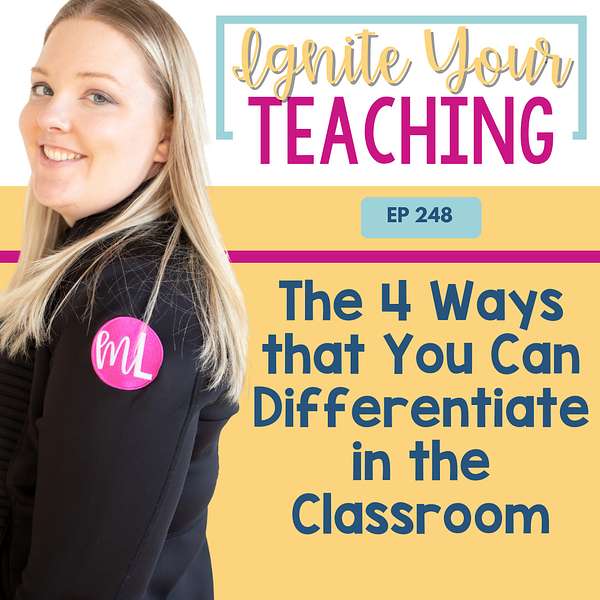
Ignite Your Teaching
Ignite Your Teaching
EP 248 - The 4 ways that you can differentiate in the classroom
Welcome to today's episode, where we will explore the concept of differentiation in the classroom. Have you ever been asked if you are differentiating for your students and wondered what it actually means?
Well, in this episode, we will discuss the four different ways you can differentiate your student groupings each day and how they can benefit your students' learning.
4 Ways to Differentiate in The Classroom
- Differentiating the content: refers to the "what" of what is being taught. It involves using different teaching strategies and tailoring the lesson to individual students. This can be done through small group learning opportunities like guided math or reading sessions.
- Differentiating the process: refers to the "how" of learning. It involves teaching students different ways to learn materials, such as through discussions or hands-on experiences. This can be done through modeling, manipulatives, and showing multiple strategies.
- Differentiating the product: refers to what students do to show their learning, often in an assessment. Rather than focusing on task completion, it focuses on the skills and knowledge being demonstrated. This can be done through a choice board of assessments or rubrics based on skills.
- Differentiating the environment: involves changing the environment in which students are learning. This can be done through flexible seating, recognizing distractions, and providing different conditions that are helpful for all students.
Overall, differentiation allows teachers to tailor instruction to meet individual students' needs and create a more engaging and effective learning environment.
So, tune in to this podcast episode to learn about the different types of differentiation and how they can be implemented in your classroom.
Remember to Subscribe for more insights on how to navigate the complexities of teaching with efficiency and impact. Share your experiences and strategies in the comments to join the conversation with fellow educators.
To find our highly effective, time-saving resources
Checkout our Madly Learning Store at www.madlylearning.com/store
Checkout our Teachers Pay Teachers store
Join our FREE Facebook community for teachers here: https://bit.ly/IYT-FB
